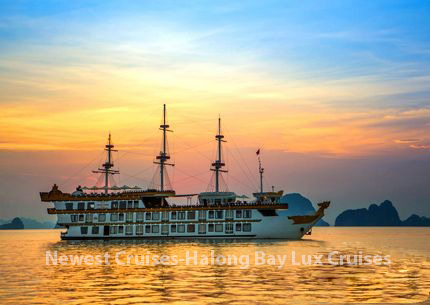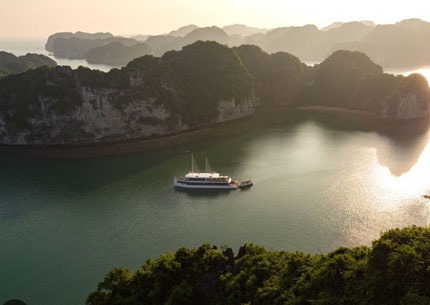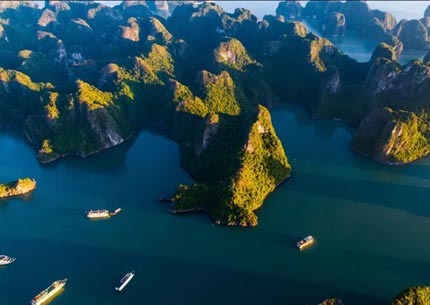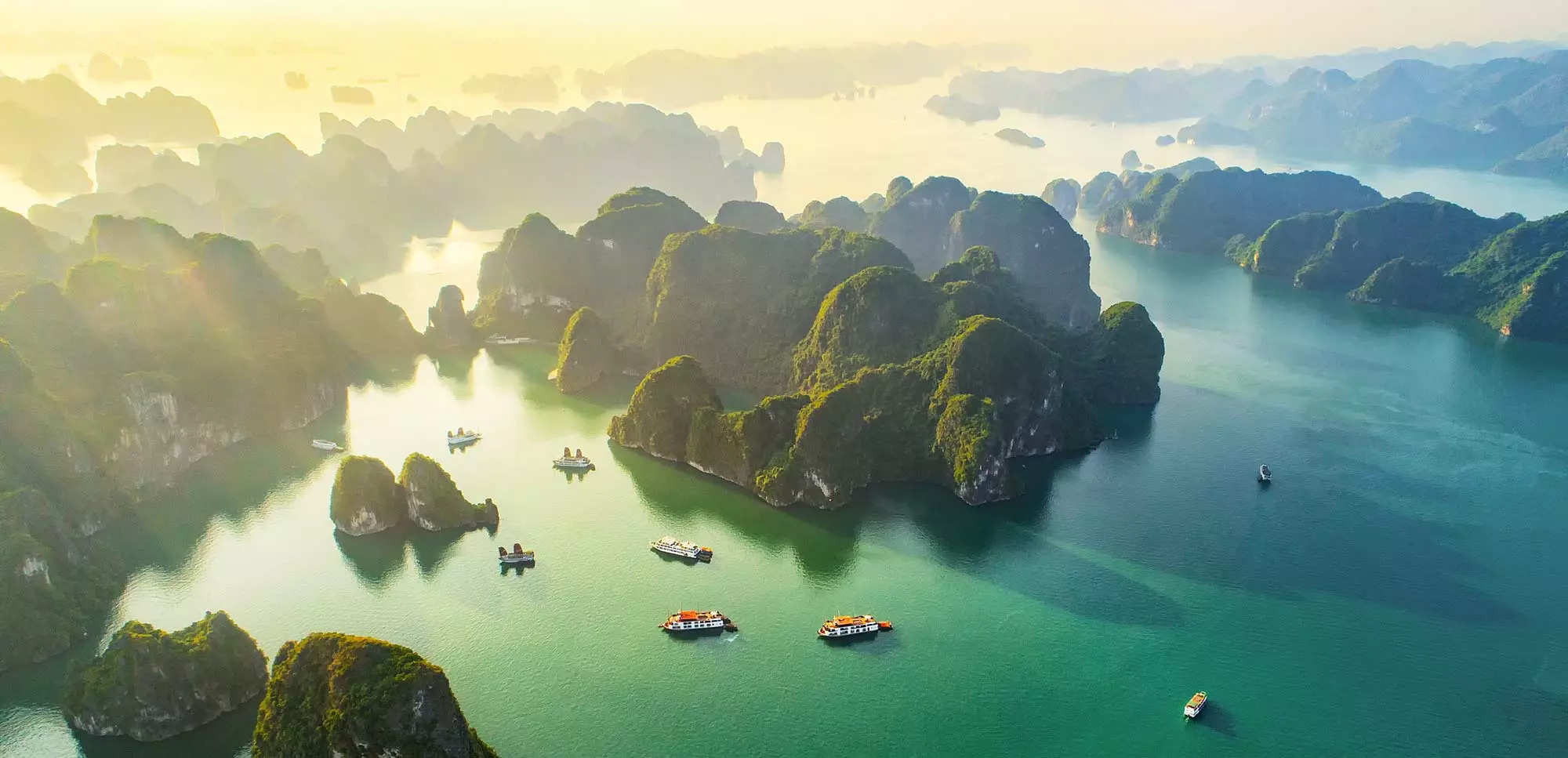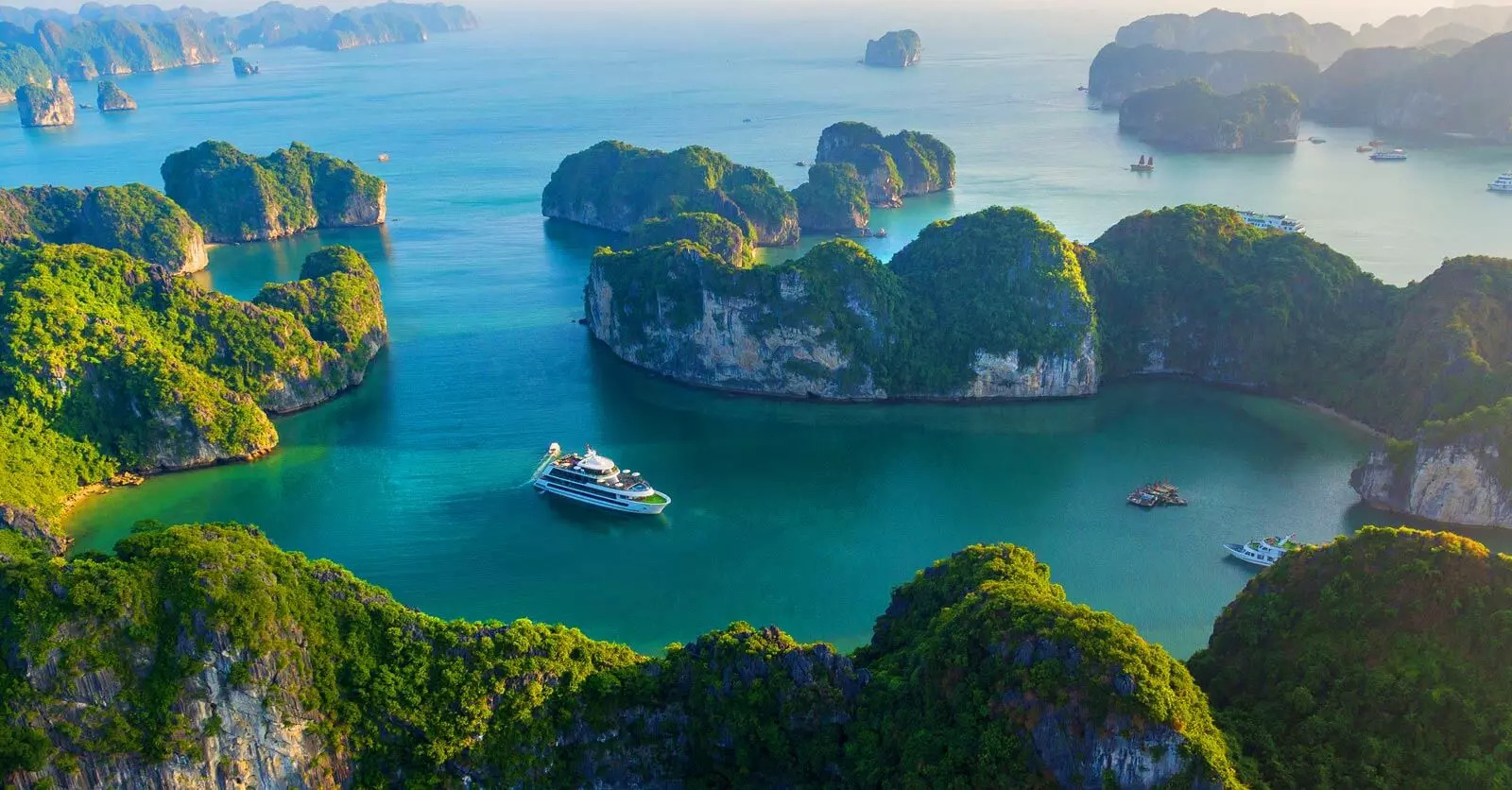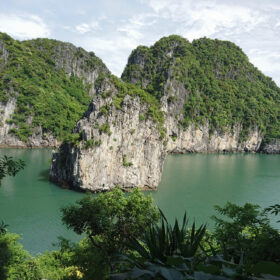13 Best Times to Visit Trang An in 2025-2026: Insider’s Month-by-Month Guide
Planning your Trang An adventure for 2025? This UNESCO wonderland in northern Vietnam offers dramatically different experiences throughout the year. Our comprehensive guide breaks down the optimal visiting times based on weather patterns, crowd forecasts, and special cultural events to ensure your journey through limestone karsts and ancient waterways exceeds all expectations.
Understanding Trang An’s Unique Appeal in 2025-2026
Trang An has rightfully earned its reputation as the “Inland Ha Long Bay” with its breathtaking landscape of limestone karsts, tranquil waterways, and rich biodiversity. Located in Ninh Binh province, just 95 kilometers south of Hanoi, this UNESCO World Heritage Site spans an impressive 10,000 hectares of interconnected valleys, caves, and cultural relics.
What makes a 2025 visit particularly compelling is the site’s ongoing conservation efforts, with new eco-friendly tour routes expected to open and visitor management systems being refined to protect this natural treasure. According to the Vietnam National Administration of Tourism, Trang An is projected to welcome over 3 million visitors in 2025, making strategic timing essential for those seeking more intimate experiences.
For travelers who appreciate the stunning limestone seascapes of northern Vietnam, Ha Long Bay offers a complementary maritime experience to Trang An’s inland beauty, with luxury cruise options that allow you to extend your northern Vietnam journey seamlessly.

Trang An’s Climate Overview: Key to Perfect Timing
Trang An experiences four distinct seasons, each painting the landscape with its unique palette and atmosphere. Understanding these seasonal variations is crucial for planning your ideal visit.
The region enjoys a subtropical climate with an average annual temperature of 23.5°C (74.3°F) and average annual rainfall of approximately 1,800mm. This creates significantly different visiting experiences throughout the year, with dramatic shifts in vegetation, water levels, and overall ambiance.
Temperature and Rainfall Patterns Through 2025
| Month | Average Temperature (°C) | Rainfall (mm) | Humidity (%)
|
|---|---|---|---|
| January | 17-20 | 25-30 | 80-85 |
| February | 17-21 | 30-40 | 80-85 |
| March | 20-24 | 40-60 | 80-85 |
| April | 24-28 | 90-120 | 80-85 |
| May | 28-32 | 150-180 | 80-85 |
| June | 30-34 | 200-240 | 80-85 |
| July | 30-34 | 240-280 | 80-85 |
| August | 29-33 | 280-320 | 85-90 |
| September | 28-32 | 220-280 | 83-88 |
| October | 25-29 | 120-150 | 80-85 |
| November | 22-26 | 40-60 | 78-83 |
| December | 18-22 | 20-30 | 78-83 |
Data sourced from Vietnam Meteorological and Hydrological Administration, 2024 projections
Period 1: January to February – Festival Season and Cultural Immersion
The early months of 2025 offer visitors a unique window into Vietnamese cultural traditions against a backdrop of misty mountains and serene waterways.
January – Traditional Celebrations and Comfortable Explorations
January in Trang An presents a refreshing, cooler climate with temperatures ranging from 17-20°C (62.6-68°F). The relatively dry conditions (only 25-30mm of rainfall) make it ideal for exploring the region’s extensive cave systems and ancient temples without the discomfort of humidity or heavy precipitation.
Cultural Highlights: January 2025 coincides with preparations for Tet (Vietnamese Lunar New Year), creating a festive atmosphere throughout the region. Local villages surrounding Trang An burst with traditional decorations, special markets, and authentic celebrations that few tourists typically witness.
Natural Scenery: The landscape takes on a mystical quality with morning mist rising from the limestone karsts, creating ethereal photo opportunities, especially between 6:00-8:00 AM. The reduced foliage during this season reveals the dramatic rock formations more clearly, offering a different perspective from the lush summer months.
Visitor Experience: January sees approximately 40% fewer visitors than peak months, translating to shorter wait times for boat tours (averaging just 15-20 minutes versus up to an hour during high season) and more peaceful temple explorations.
February – Tet Celebrations and Springtime Rebirth
February brings slightly warmer temperatures (17-21°C/62.6-69.8°F) and marks the beginning of spring with early blooms adding splashes of color to the landscape.
Cultural Immersion: February 2025 will feature the Vietnamese Lunar New Year celebrations (expected to fall on January 29), with festivities continuing into early February. This period offers an authentic glimpse into Vietnam’s most important cultural celebration, including traditional performances, temple ceremonies, and special cuisine.
Natural Attractions: As February progresses, the first signs of spring emerge with wild peach and plum blossoms dotting the limestone landscape. The water levels remain low, exposing more of the unique rock formations and making certain caves more accessible than during rainy months.
Visitor Insights: While domestic tourism peaks during the Tet holiday week (expect a 70-80% increase in local visitors), international crowds remain relatively thin. By mid-February, the domestic tourist surge subsides, creating a sweet spot for visitors seeking cultural authenticity without overwhelming crowds.
Pro Tip: Book accommodation at least 3-4 months in advance if visiting during the Tet holiday period, as regional hotels reach 95-98% occupancy during this time.
Period 2: March to May – Prime Season for Natural Splendor
Spring represents the golden period for Trang An exploration, offering ideal weather conditions and spectacular natural transformations.
March – Perfect Balance of Weather and Accessibility
March delivers near-perfect conditions with temperatures ranging from 20-24°C (68-75.2°F) and moderate rainfall (40-60mm), creating comfortable exploration conditions without excessive heat or precipitation.
Landscape Transformation: By early March, the landscape begins its dramatic transformation as rice paddies surrounding Trang An are prepared for planting, creating geometric patterns of reflective water surfaces that mirror the limestone formations. The 238 plant species identified in the Trang An ecosystem begin their spring growth cycle, adding vibrant greens to the scenery.
Visitor Experience: March represents the beginning of the international tourism season, with visitor numbers increasing by approximately 30-40% from February levels. However, weekday visits remain pleasantly uncrowded, with main boat departure points operating at about 60% capacity.
Special Activities: The Trang An Festival traditionally takes place in March (following the lunar calendar), featuring traditional boat races, folk games, and spiritual ceremonies at Hoa Lu Ancient Capital. In 2025, this is projected for late March, offering visitors a deeper cultural dimension to their experience.
April – Vibrant Landscapes and Comfortable Explorations
April brings warmer temperatures (24-28°C/75.2-82.4°F) with increasing but still manageable rainfall (90-120mm), typically in short afternoon showers that minimally impact sightseeing.
Natural Highlights: By April, the landscape reaches peak vibrancy with fully-terraced rice fields surrounding the karst formations creating a stunning contrast of emerald green against the gray limestone. The boat routes through Trang An are bordered by lush vegetation, creating natural tunnels of greenery in many sections.
Photography Opportunities: April provides optimal lighting conditions, especially during the “golden hours” (approximately 5:30-7:00 AM and 5:00-6:30 PM), when the sun’s angle creates dramatic shadows and highlights across the karst landscape. The clear skies offer 70-80% more ideal photography days compared to summer months.
Visitor Considerations: April sees tourism increase steadily, particularly around the Vietnamese national holiday (April 30-May 1). Boat wait times average 30-45 minutes during weekends and holidays but remain reasonable on weekdays.
May – Last Window of Ideal Conditions Before Summer Heat
May transitions toward summer with temperatures rising to 28-32°C (82.4-89.6°F) and rainfall increasing to 150-180mm, though typically concentrated in short, intense afternoon showers.
Ecosystem Activity: May represents peak activity for Trang An’s diverse ecosystem, with all 30 mammal species and 50+ bird species highly visible. Visitors have approximately a 70% higher chance of spotting rare langurs, flying squirrels, and colorful kingfishers compared to winter months.
Water Levels: By May, water levels in the cave systems and waterways have increased slightly, making boat navigation easier through narrower passages while still maintaining access to most cave systems. The famous “Dark Cave” passage is typically fully navigable by mid-May.
Visitor Experience: May weekdays offer a sweet spot of excellent weather conditions with moderate crowd levels (60-65% capacity). However, the first signs of summer tourism appear, with weekends seeing increasing visitor numbers, particularly from nearby Asian countries.
Expert Insight: For a more exclusive experience in May, consider the longer boat routes (Option 3 or the combined routes), which see approximately 40% fewer boats than the standard short routes while showcasing more remote and pristine sections of the ecosystem.
For travelers looking to extend their northern Vietnam adventure, 5-star cruise experiences in Ha Long Bay offer a perfect complement to your Trang An exploration, with similar limestone formations but in a maritime setting.
Period 3: June to August – Summer Heat and Lush Abundance
The summer months transform Trang An into a verdant paradise with challenges and rewards for the heat-tolerant traveler.
June – Increasing Heat with Stunning Green Panoramas
June brings full summer conditions with temperatures ranging from 30-34°C (86-93.2°F) and substantial rainfall (200-240mm), typically occurring as afternoon thunderstorms.
Landscape Features: By June, the rice paddies surrounding Trang An reach their peak greenery, creating an extraordinary carpet of emerald stretching to the horizon. The limestone mountains appear to rise from a green sea, creating what many photographers consider the most dramatic visual contrast of the year.
Practical Considerations: The combination of heat and humidity (consistently above 80%) makes physical activities more challenging, with visitors typically requiring 50% more water intake than in spring months. Morning excursions (departing before 8:00 AM) are strongly recommended to avoid the peak heat of 11:00 AM-3:00 PM.
Visitor Patterns: June marks the beginning of the Vietnamese school holiday period, resulting in increased domestic tourism, particularly on weekends when boat wait times can reach 60-90 minutes. However, weekday visits remain manageable with moderate crowds.
July – Peak Rainfall and Vibrant Ecosystems
July continues the summer pattern with sustained high temperatures (30-34°C/86-93.2°F) and reaches peak rainfall levels (240-280mm), creating a dramatically different Trang An experience.
Water Landscape Transformation: The increased rainfall transforms Trang An’s waterways, raising water levels by an average of 0.5-0.8 meters compared to spring months. This creates deeper passages through caves and occasionally limits access to certain low-ceiling grottos, but compensates by opening routes that are too shallow during drier months.
Wildlife Activity: Despite the challenging conditions for humans, July represents peak activity for Trang An’s ecosystem, with increased sightings of rare bird species and vibrant insect life. Butterfly enthusiasts can observe up to 35 different species during this period, including the rare Vietnamese Golden Kaiser.
Tourism Dynamics: International tourism typically decreases by 20-30% during July, creating an interesting dynamic where domestic tourism increases while foreign visitors decrease, resulting in a more authentic local atmosphere at major sites.
August – Dramatic Skies and Peak Water Levels
August maintains high temperatures (29-33°C/84.2-91.4°F) with maximum rainfall (280-320mm), creating the most dramatic water landscapes of the year.
Unique Experiences: August visitors witness Trang An at its most aquatic, with certain rice fields completely flooded and reflecting the limestone formations like mirrors. The boat routes take on a more adventurous character, with some caves becoming challenging passages where passengers occasionally need to duck below stalactites that are well above water level in drier months.
Photography Opportunities: The frequent storms create spectacular cloud formations and dramatic lighting conditions, especially during the breaks between rain systems. The clear air following rainfall offers exceptional visibility and vibrant colors, particularly during the “blue hour” (approximately 30 minutes after sunset).
Visitor Considerations: August tourism levels remain similar to July, with domestic visitors predominating. Boat tours may experience weather-related delays or cancellations (approximately 15-20% chance on any given day), so building flexibility into your itinerary is advisable.
Expert Tip: The floating seasons of July-August offer unique photography opportunities that most tourism promotional materials don’t capture. Bring appropriate rain gear and water protection for equipment to maximize these special conditions.
Period 4: September to October – The Golden Season Returns
As summer heat subsides, Trang An enters another prime visitation period with comfortable conditions and spectacular visual transformations.
September – Transition to Autumn with Lingering Warmth
September begins the transition to autumn with temperatures moderating to 28-32°C (82.4-89.6°F) and rainfall decreasing slightly to 220-280mm, though still occurring regularly.
Natural Highlights: The landscape remains lush from summer rains, but the first hints of autumn appear as select plant species begin subtle color changes. The rice fields surrounding Trang An enter their pre-harvest golden phase in late September. Creating a striking contrast against the limestone and verdant mountains.
Visitor Experience: September sees domestic tourism decrease as Vietnamese schools reopen, creating a noticeable reduction in crowds compared to summer months. Boat wait times average 20-30 minutes on weekends and minimal delays on weekdays.
Special Opportunities: The combination of warm temperatures and decreasing rainfall makes September ideal for combining Trang An boat tours with hiking excursions to viewpoints like Mua Cave peak. Which offers panoramic views from 500 steps up the mountainside.
October – Perfect Weather and Harvest Gold
October delivers near-perfect conditions with pleasant temperatures (25-29°C/77-84.2°F) and significantly reduced rainfall (120-150mm), typically occurring as brief showers rather than extended systems.
Visual Spectacle: October coincides with the rice harvest in many fields surrounding Trang An, creating a landscape transformed by golden hues. The contrast between harvested and unharvested fields creates a patchwork effect that photographers travel specifically to capture. The low water levels once again reveal more of the limestone formations’ intricate details.
Comfort Factors: The reduced humidity (averaging 80-85%) combined with moderate temperatures creates the most comfortable physical experience for exploring Trang An’s extensive sites. This weather window is ideal for visitors who wish to combine boat tours with temple hikes and cultural explorations without excessive heat stress.
Tourism Patterns: October sees international tourism begin to increase again, with visitor numbers growing steadily throughout the month. However, the overall experience remains uncrowded compared to spring peaks, with boat wait times averaging just 15-25 minutes even on weekends.
For travelers with additional time to explore northern Vietnam’s natural wonders, combining October’s perfect weather with a 3-day luxury cruise through Ha Long and Lan Ha Bay creates an unforgettable limestone landscape experience both inland and at sea.
Period 5: November to December – Cool Serenity and Clear Views
The year’s final months offer a distinctly different Trang An experience with cooler temperatures and crystal-clear visibility.
November – Cooling Temperatures and Crystal Clarity
November brings noticeable cooling with temperatures ranging from 22-26°C (71.6-78.8°F) and minimal rainfall (40-60mm), creating exceptionally clear conditions.
Visual Advantages: The combination of cooler, drier air creates unmatched visibility across Trang An’s vast landscape. Views from elevated points extend up to 15-20 kilometers on clear days, revealing the full scale of this karst ecosystem. The lower sun angle creates enhanced shadows and definition in the limestone formations throughout the day.
Foliage Transformation: While not displaying the dramatic autumn colors of temperate regions, Trang An’s landscape shifts to a more muted palette as certain plant species enter dormancy. This reduction in foliage actually enhances visibility of wildlife and rock formations that summer growth conceals.
Visitor Experience: November sees moderate international tourism with minimal domestic crowds outside of weekends. Boat tours operate with high efficiency, typically departing within 10-15 minutes of arrival during weekdays.
Comfort Factors: The cooler temperatures make November ideal for active exploration of the broader Ninh Binh region. With comfortable conditions for cycling between sites like Bai Dinh Pagoda, Hoa Lu Ancient Capital, and Trang An proper.
December – Winter Tranquility and Festive Atmosphere
December delivers winter conditions with temperatures cooling further to 18-22°C (64.4-71.6°F) and minimal rainfall (20-30mm), occasionally accompanied by mist and fog that transforms the landscape.
Atmospheric Effects: Winter mornings frequently feature mystical fog that winds through the limestone formations, creating an ethereal landscape particularly between 6:00-9:00 AM. These conditions offer photographers unique opportunities to capture moody, atmospheric images distinct from other seasons.
Practical Benefits: December’s cooler temperatures make exploration of Trang An’s cave systems more comfortable, as the enclosed spaces that can feel stuffy during summer months become pleasantly cool. The drier conditions also improve footing on hiking trails to viewpoints and temples.
Tourism Dynamics: Early December sees some of the year’s lowest visitor numbers, creating a peaceful experience at even the most popular sites. However, international tourism increases approaching the Christmas and New Year holidays, when advance booking becomes more important.
Cultural Elements: December in Trang An coincides with early preparations for the upcoming Tet holiday. With subtle decorative changes appearing in surrounding villages. Markets beginning to feature special holiday items as the month progresses.
Making Your Decision: Which Time is Truly Best Times to Visit Trang An?
After analyzing Trang An’s seasonal variations. We can identify three distinct “prime windows” for visiting in 2025, each offering different advantages:
Prime Window 1: March 15 to May 15 – The Classic Optimum
This 8-week period offers the most balanced experience with:
- Comfortable temperatures (20-28°C/68-82.4°F)
- Moderate rainfall that rarely disrupts activities
- Vibrant green landscapes with excellent visibility
- Cultural events including the Trang An Festival
- Reasonable crowd levels, especially on weekdays
Ideal for: First-time visitors, photographers seeking classic landscape shots, cultural enthusiasts, and travelers with moderate heat tolerance.
Prime Window 2: October 1 to November 15 – The Golden Season
This 6-week window features:
- Pleasant temperatures (22-29°C/71.6-84.2°F)
- Minimal rainfall with excellent visibility
- Unique golden landscapes during harvest season
- Reduced humidity and physical comfort
- Lower visitor numbers than spring season
Ideal for: Photographers seeking unique harvest scenes. Hikers wanting to combine boat tours with mountain treks, and travelers preferring drier conditions.
Prime Window 3: December 1 to 20 – The Serene Season
This 3-week period offers a distinctive experience with:
- Cooler temperatures (18-22°C/64.4-71.6°F)
- Minimal rainfall but atmospheric morning mist
- Clear visibility of geological features
- Lowest tourist numbers of the year
- Mysterious, ethereal landscape qualities
Ideal for: Photographers seeking atmospheric shots, travelers preferring solitude. Visitors sensitive to heat who want to explore extensively on foot.
Expert Tips for Any Season in Trang An
Regardless of when you choose to visit Trang An in 2025, these insider recommendations will enhance your experience:
- Timing Strategy: Arrive at the main boat dock before 8:00 AM or after 2:30 PM to avoid peak crowds regardless of season. Early morning arrivals enjoy 50-60% shorter wait times and better lighting for photography.
- Route Selection: Choose your boat route strategically based on the season:
- Route 1 (2-2.5 hours): Best during hot months as it has more cave passages providing natural cooling
- Route2 (2.5-3 hours): Optimal during winter months with more open-air sections offering better light
- Route 3 (3.5-4 hours): Recommended for serious photographers in any season, with 30% fewer boats and more remote scenery
- Layered Clothing: Trang An’s cave systems maintain a relatively constant temperature of 20-22°C (68-71.6°F) year-round, creating a cooling effect in summer and warming effect in winter. Dress in layers that can be adjusted when moving between caves and open areas.
- Photography Equipment: Bring lens protection for summer visits when sudden rainfall is common. For winter photography, include a microfiber cloth to manage condensation when moving between temperature zones.
- Extended Exploration: Complement your Trang An boat tour with visits to nearby attractions based on seasonal conditions:
- Mua Cave Viewpoint: Best in early morning during cooler months (Oct-Mar)
- Bai Dinh Pagoda Complex: Ideal during midday in hot months (Jun-Aug) for its shaded walkways
- Hoa Lu Ancient Capital: Most atmospheric during spring festival season (Feb-Mar)
- Accommodation Strategy: Rather than staying in the immediate Trang An area, consider basing yourself in Tam Coc (just 5km away). Which offers 30% more dining options and accommodations ranging from boutique homestays to luxury resorts set among rice fields.
Conclusion: Your Best Times to Visit Trang An Timing Awaits
“Trang An’s beauty shines year-round, offering unique experiences each season. Choose the right time to match your preferences—whether for weather. Scenery, culture, or crowds—and create unforgettable memories in this UNESCO treasure.”
Would you like an even more condensed version or one tailored for a specific purpose (e.g. brochure, website, social media)?
Consider extending your northern Vietnam experience with a complementary seascape adventure through Ha Long Bay’s limestone karsts, creating a comprehensive exploration of Vietnam’s most spectacular natural formations both inland and at sea.
Trang An awaits your discovery—in the season that speaks most clearly to your traveler’s heart.
- Hotline | WhatsApp: +84.978.358.422
- Phone | WhatsApp: +84.962.261.687
- Email: halongbayluxcruises@gmail.com
- vietnammarveltravel@gmail.com



